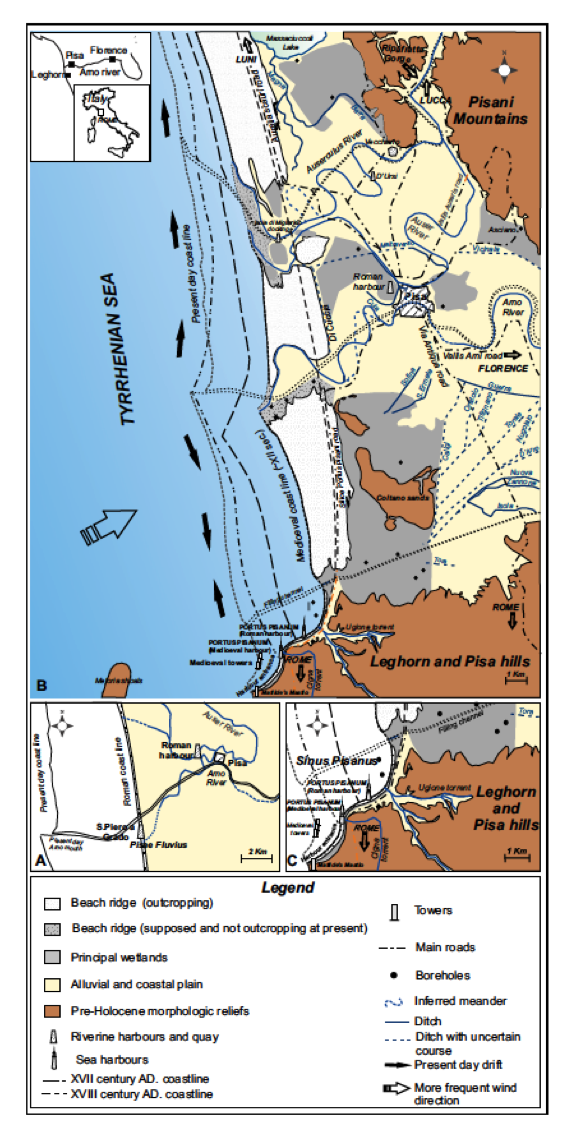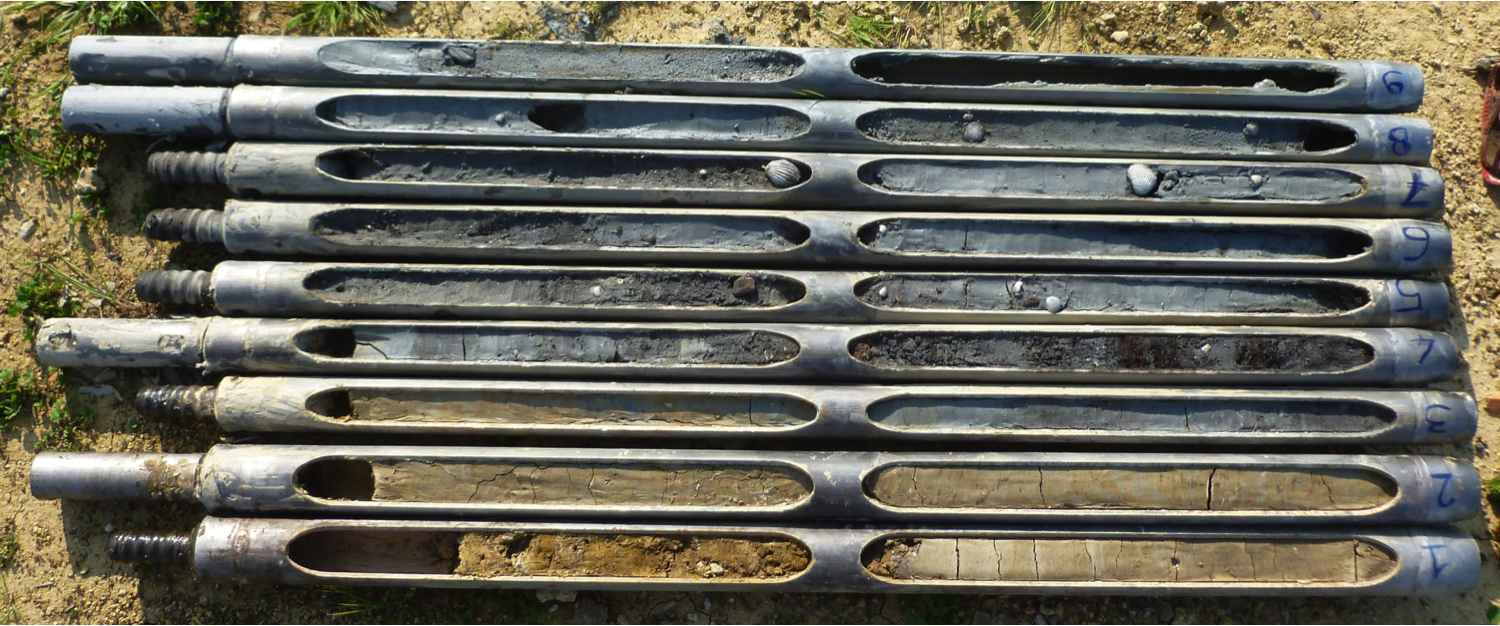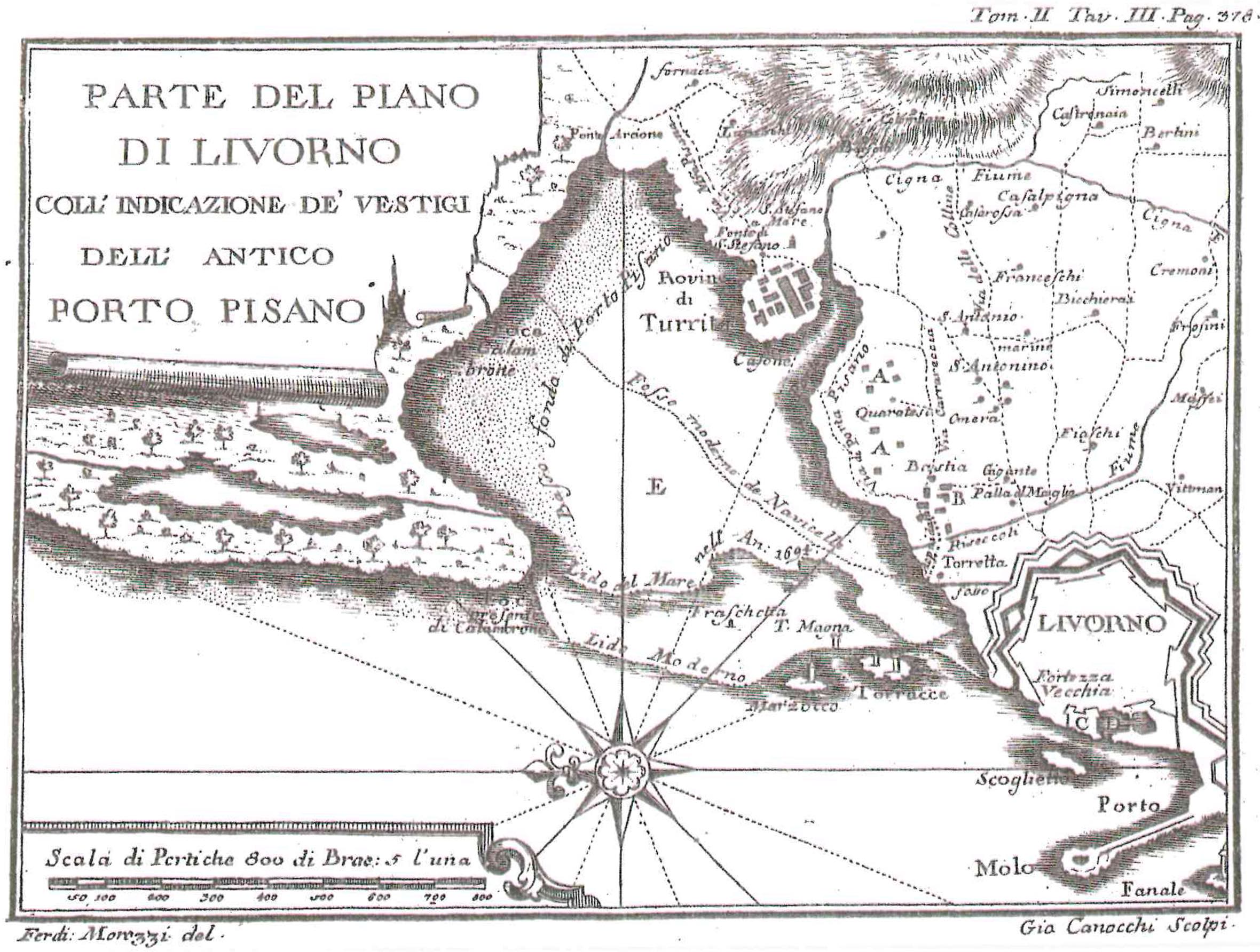During the last millennia human and natural processes have become increasingly intertwined, especially in the Mediterranean coastal and alluvial plains where major urban and trade centres developed since protohistoric times. The  construction of ports represents one of the human activities that have mostly contributed to modify coastal environments, inducing a variety of hydrodynamic and hydrochemical changes especially since Roman times (Marriner et al., 2014).
construction of ports represents one of the human activities that have mostly contributed to modify coastal environments, inducing a variety of hydrodynamic and hydrochemical changes especially since Roman times (Marriner et al., 2014).
Exceptions in this common manner to plan harbours have been recognised along the N Tyrrhenian coast, where no high-impact defense works are explicitly documented by either historical sources or archaeological excavations for three main harbours developed during Etruscan-Roman times (IV-I century BC): Portus Lunae (Bini et al., 2012), Portus Pisanus and Vada Volterrana.
Roman literary sources (i.e., Itinerarium Maritimum 501; Rutilio Namaziano) mentioned Portus Pisanus as a flourishing commercial site within a natural protected area (called Sinus Pisanus by Tacito) characterized by Posidonia meadows and located at the foot of Leghorn hills, ca. 18.5 km south of the Pisa city. Accordingly, recent excavations undertaken close to the hills slope, 3 km inland from modern coastline, unearthed a wooden palisade, stone piers and a warehouse dated to the Roman period (Pasquinucci, 2013; Morhange et al., 2015).
Link to pubblication
 However, the precise location of the lagoonal harbour basin is still controversial. This study aims to contribute to fill this knowledge gap and shed new light on the main stages of harbour history in the framework of the mid-late Holocene palaeogeographic evolution of the Pisa PlainThe application of a multidisciplinary approach (sedimentological and micropalaeontological core analyses,
However, the precise location of the lagoonal harbour basin is still controversial. This study aims to contribute to fill this knowledge gap and shed new light on the main stages of harbour history in the framework of the mid-late Holocene palaeogeographic evolution of the Pisa PlainThe application of a multidisciplinary approach (sedimentological and micropalaeontological core analyses,  radiocarbon dating, geomorphological field survey, remote sensing and historical cartography) has revealed that a wide lagoonal basin formed in the study area during the marine transgression peak (ca. 8000 cal yr BP). This basin, recorded by a m-thick subsurface succession of soft grey clays with brackish meiofauna, persisted for several millennia and corresponds to Sinus Pisanus. The available stratigraphic data document that during Roman times the lagoon became progressively less connected to the sea and turned into a coastal lake/pond. Filling processes started two-three millennia later respect to the lagoon occupying the Pisa city area during the Holocene (Rossi et al., 2011). This seaward facies shift forced the westward transferring of the Middle Ages harbour (Sarti et al., 2010; Martini et al., 2010). These results show that natural sheltered conditions along with the distance from coeval Arno River made more advantageous for humans following the shoreline changes, rather than making high-impact interventions.
radiocarbon dating, geomorphological field survey, remote sensing and historical cartography) has revealed that a wide lagoonal basin formed in the study area during the marine transgression peak (ca. 8000 cal yr BP). This basin, recorded by a m-thick subsurface succession of soft grey clays with brackish meiofauna, persisted for several millennia and corresponds to Sinus Pisanus. The available stratigraphic data document that during Roman times the lagoon became progressively less connected to the sea and turned into a coastal lake/pond. Filling processes started two-three millennia later respect to the lagoon occupying the Pisa city area during the Holocene (Rossi et al., 2011). This seaward facies shift forced the westward transferring of the Middle Ages harbour (Sarti et al., 2010; Martini et al., 2010). These results show that natural sheltered conditions along with the distance from coeval Arno River made more advantageous for humans following the shoreline changes, rather than making high-impact interventions.
2012, Bini M., Bruckner H., Chelli A., Da Prato S., Gervasini L., Palaeogeographies of the Magra Valley coastal plain to costrain the location of the Roman harbour of Luna (NW Italy), Palaeogeography, Palaeoclimatology, Palaeoecology, 337-338, 37–51.
2014, Marriner N., Morhange C., Kaniewski D., Carayon N., Ancient harbour infrastructure in the Levant: tracking the birth and rise of new forms of anthropogenic pressure, Nature Scientific Reports, 4, 5554.
2015, Morhange C., Marriner N., Baralis A., Blot M.L., Bony G., Carayon N., Carmona P., Flaux C., Giaime M., Goiran J.-P., Kouka M., Lena A., Oueslati A., Pasquinucci M., Porotov A., Dynamiques géomorphologiques et typologie géoarcheologique des ports antiques en contextes lagunaires, Quaternaire, 26, (2), 117–139.
2013, Pasquinucci M., Guida all’archeologia delle coste livornesi. Nardini Editore. Provincia di Livorno. 271 pp.
2011, Rossi V., Amorosi A., Sarti G., Potenza M., Influence of inherited topography on the Holocene sedimentary evolution of coastal systems: An example from Arno coastal plain (Tuscany, Italy), Geomorphology, 135 (1-2), 117–128. Link to pdf
2010 , Sarti G., Bini M. & Giacomelli S.- Correlations between landscape, geology and the growth and decline of Pisa (Tuscany, Italy) up to the Middle Ages. Il Quaternario Italian Journal of Quaternary Science, vol. 23, 311-322. - Link to pdf
2010, Martini I.P., Sarti G., Pallecchi P. & Costantini A.-- Enviromental influences on the development of the medioeval-early-renaissance city-states of Pisa, Florence and Siena. In: Landscape and Societies, chapter 17, Martini P. and Ward Chesworth eds. Springer Verlag. 203-223. - Link to pdf









